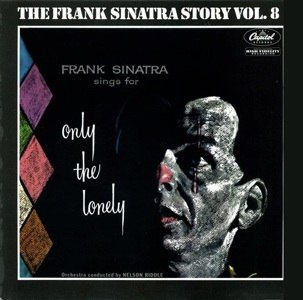Frank Sinatra Sings for Only the Lonely - 1958
And the winners are....hard to find
Frank Sinatra Sings for Only the Lonely - 1958
And the winners are....hard to find
Performance factors aside -- and the performance is just about perfect -- FRANK SINATRA SINGS FOR ONLY THE LONELY is certainly a strong contender to be named as my favorite Sinatra/Capitol album in terms of sound quality. Sadly, it has had a varied release history, and while many releases sound “good” or “just fine” or even “excellent,” finding a copy that is “the best” is tricky, and it’s really a matter of pooling together options, and then eliminating choices and seeing what’s left when all is said and done.
Let the winnowing begin!
Elimination Round #1 - “Commonly available” stereo LPs (and tapes)
Some of the best-sounding copies of this release are on standard-issue stereo LPs that were in print from 1958-c.1987 (depending on country). I’m thinking specifically of two very different examples: Early “D” pressing SW-1053 LPs from the late-50s, and SM-1053 pressings from circa 1974-1977, especially those cut on the Neumann lathe from the master tape at the Capitol tower (with “F” and “G” in the runout groove). Even though some of these sound very nice, I need to scratch them off the winners list. Reason for elimination: ONLY THE LONELY is a 12-song album, and these releases have only 10 songs.
Elimination Round #2 - UK stereo “One for My Baby” LP
Twelve songs, in original stereo mixes, with decent sound (a hair thin, subtly edgy on the vocals). Reason for elimination: Jumbled running order.
Elimination Round #3 - Mono releases
Just because I take issue with the mono mix does not mean it’s bad. It means I have issues. Many people love the mono mix, and it certainly has its plusses, and there have been many very good sounding masterings of the mono mix over the years. From what I’ve heard, the 2008 MFSL mono releases are the way to go, as the tone is nice, and the dynamics out-do any previous mono versions.
This is the third of three Sinatra LPs to be recorded in mono and stereo by different crews on different equipment in different booths. For me, it’s the most sonically successful of the three mono recordings. On a 1-to-10 scale, in their best masterings, I’d rate the mono WHERE ARE YOU as a 7, the mono COME FLY WITH ME a 4, and ONLY THE LONELY a strong 8. I think that, tonally, ONLY THE LONELY is excellent in mono, and reverb levels are reasonable. That said, I have two “beefs” with the basically-good mono recording. One “beef” is that Sinatra and the orchestra do not seem to be congealed or cohesive. Frank sounds like he’s 6 inches from my face, and parts of the orchestra sound like they are fifty feet behind him, the sort of problem that never would have happened on the mono recordings from Capitol just a couple years earlier. (It’s kind of the opposite of the problem I hear with 1968’s FRANCIS A. & EDWARD K. album, in which the band sounds disjointed in stereo, but somewhat more cohesive in the mono mix.) I printed a rambling, juvenile’s-perspective explanation about my second “beef” on the original version of this website back in 2010. I re-present it again here:
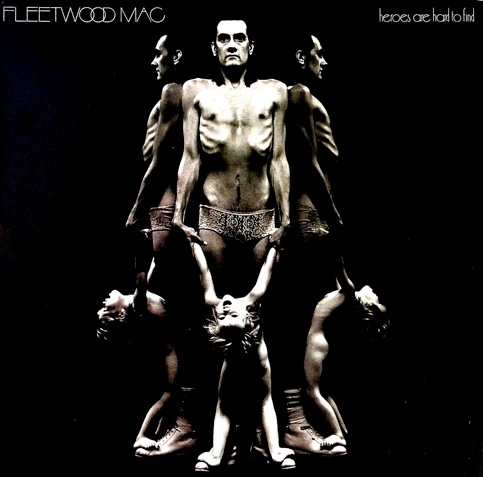




Top mono choices = 2008 MFSL releases

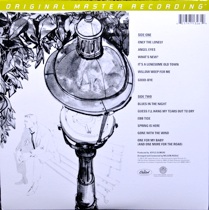
Elimination Round #4 - Stereo Compact Discs
The 1998 Norberg remixed CD, even as Norberg CDs go, is just awful, so it’s elimination from the list is a given. That leaves the 1987 Walsh remixed CD, which was reused in the 1998 UK boxed set. It has some No-Noise in use, and there are a couple of “effects” present in the original mix that are missing here, but on the whole, it’s not bad. Reason for elimination: No-noise; a little too much reverb; missing “effects”.
Top stereo CD choice = 1987 remix, and its 1998 re-use in the UK boxed set
Elimination Round #5 - 1983-1984 Unabridged stereo LPs
The 1983 MFSL and 1984 UK and Dutch LPs are probably, in terms of raw sonics, the best sounding releases that FRANK SINATRA SINGS FOR ONLY THE LONELY has ever had. That said, side two of these LPs is riddled with tape dropouts. The 1984 releases have IT’S A LONESOME OLD TOWN in mono, have channels reversed on SPRING IS HERE, and have significant dropouts on two songs at the end of side two. Reason for elimination: tape source problems.
Elimination Round #6 - Unabridged Japanese stereo LP
The 1973 Japanese release in Toshiba-EMI’s “Best Recording Series” of LPs has decent tone, a little on the dull side for many tracks, and is free of tape dropouts, but all of the bass frequencies are centered, rather than being at the right, which compromises the stereo width. This is accomplished via aggressive use of the “low-frequency blend” function during the cutting process, in which the mastering engineer made the choice to move all bass frequencies below about 300 Hz to the center. Oddly, the two tracks that are missing on many LPs, “It’s a Lonesome Old Town” and “Spring Is Here,” sound better than the ten “common” tracks. I would not rule out the possibility that EMI-Toshiba had an old 10-song master on-hand, then had Capitol send out a new tape for the two missing tracks, and those dubs did not quite match up with (and were, in fact, superior to) the existing tracks on EMI-Toshiba’s existing reels. Reason for elimination: Reduced stereo width, with bass at center; unspectacular tone on ten of the songs. (Reminder: This is by far the most lavish packaging in this title’s history. There’s also a quick tape glitch on “Gone with the Wind.”)
Elimination Round #7 - Unabridged stereo LPs - ...and then there were three...
This gets us down to only three remaining stereo LP options: The very first unabridged stereo release of this album, 1968’s Australian LP #SENC-94394, the 1971 Dutch release, “The Frank Sinatra Story, Volume 8,” #5C052.81179, and the 1972 Australian World Record Club follow-up, LP #S/5004, and of the three, the 1968 Australian release has the worst mastering, with the 1972 Australian and 1973 Dutch LPs both clearly superior and, in terms of sound, being very nearly tied with each other, with a slight sonic edge going to the 1972 Australian version, meaning:
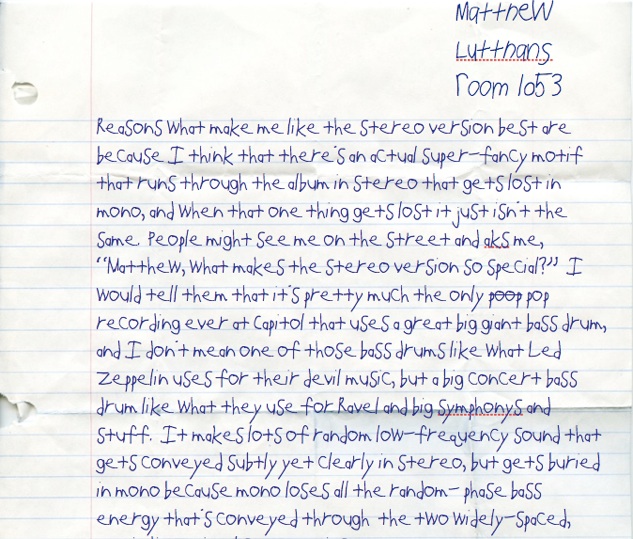
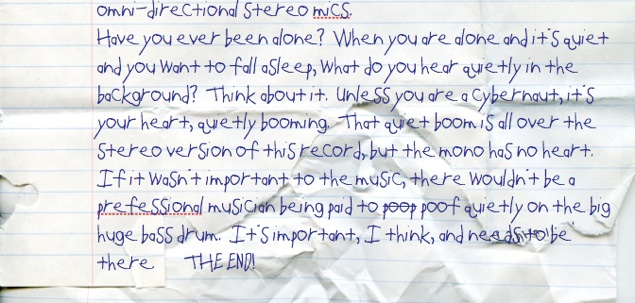
Reason for elimination: The mono recording, while not bad, doesn’t impress me the way the stereo recording does, and is more-or-less missing the crucial “bass drum effect.” YMMV, of course.
The “winner,” the “top choice” overall is:
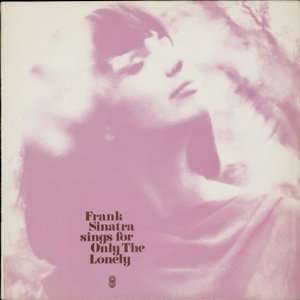
1972 Australian World Record Club LP #S/5004
•Original, excellent stereo mix
•12 songs, as intended (unabridged)
•Very good stereo mastering
•Source tapes in excellent condition
(There are two instantaneous, essentially negligible dropouts)
•Good luck finding one!
In six years of actively seeking one out, I have found literally one copy ever listed online (and I bought it).
In practical terms, that 1972 World Record Club Australian LP is 99.99% “inobtanium” for the typical collector, nearly impossible to find. That being the case, I would advise working your way backwards through the elimination list to get a release that ranks somewhere else on the list. The Dutch “Story” LP is an excellent place to start, as it is dropout-free, has good mastering, and better overall tone than the 1973 Japanese LP, which is not all that good, honestly. It’s okay, but that’s about it. The same can be said of the 1968 Australian SENC LP. As I mentioned up-page, the 1983 and 1984 LP releases (MFSL and “Dell”) sound best of all, but they have some flaws that you’ll need to put up with. The Walsh remix CD is, regrettably, No-noised, but is generally ok. The mono mix is the favorite of many people and there are some excellent masterings available.
Find a 12-song version. Play it. Enjoy it. The better the sound, the better the experience, but clearly some of the better-sounding copies are very, very hard to find, so go easy on yourselves, my fellow Sinatra collectors.
A very respectable second-place finish goes to:
1971 Dutch LP #5C052.81179
•Original, excellent stereo mix
•12 songs, as intended (unabridged)
•Very good stereo mastering
(Just a half-notch below the Australia LP, but still quite good)
•Source tapes in excellent condition
•Somewhat rare, yes, but far more common than the 1972 Australian release
